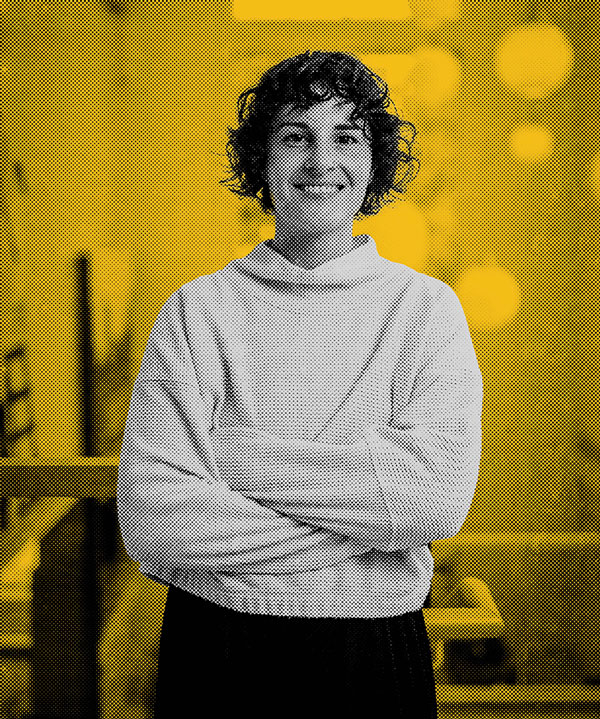By Alex Keimig

Nicole Guinn is a Geosensing Systems Engineering and Sciences Ph.D. candidate whose work has been featured by NASA and ScienceAlert, among others. She studies the intersection of remote sensing and volcanology, and NASA’s Earth-observing satellites are crucial to her work.
In volcanology, carbon dioxide (CO2) is a key predictor gas for imminent eruption activity. While other gases can be measured remotely, the CO2 naturally present in Earth’s atmosphere makes it difficult to differentiate via satellite.
“My initial motivation was to find a way to characterize volcanic CO2 from space; I wanted to do that by using trees as a proxy. Since trees take in CO2 through photosynthesis, and we can measure the health of trees from space, then volcanoes letting out more CO2 should be reflected in the photosynthesis of trees around them. We can measure how green the trees are from space and how that changes over time,” says Guinn.
There are many confounding factors affecting what Guinn can see from space, so she carefully considers long-term trends and how numbers fluctuate over time.
UH is one of the only universities in the country with a graduate Geosensing Systems program.Nicole Guinn
“UH is one of the only universities in the country with a graduate Geosensing Systems program, and with that kind of title, we’re able to meaningfully connect with other agencies doing remote sensing, like NASA and USGS,” she adds.
Guinn’s research began with Mount Etna in Italy, but she has no plans to stop there.
Volcanoes vary enough from place to place that it’s difficult to fully extrapolate findings from one location. Guinn is currently studying Yellowstone, doing similar work and comparing it to other activity like seismicity and deformation.
“Next, I want to streamline the process to apply to any volcano. We need more case studies and more research, but I think we could be able to establish a potential new monitoring technique,” she says.
Saikiran Anugam completed his master’s thesis, Suppression of Shear Flow in Microgravity Strengthens Non-Specific Protein Contacts to Enhance Aggregation, earlier this year. In collaboration with NASA and Frank Worley Professor Peter Vekilov’s team, Anugam’s research sought to understand the duration and diffusion of protein aggregation in the human body.
Proteins are essential components of life on Earth. Their shape and function are inextricable, meaning these chains of amino acids must fold into particular configurations to fulfill the specific roles they play in the body. Misfolding can lead to aggregation, which can in turn lead to brain and eye cancers as well as life-threatening conditions like Alzheimer’s and Parkinson’s Disease.
Vekilov’s team wanted to better understand the dynamics of these aggregating proteins, and they had to go out of this world — literally — to find just the right conditions: samples were given to NASA and launched by rocket in December 2018 to the International Space Station, where the experiments took place.
Two minutes of video were taken every 30 minutes via microscope for several weeks to observe the behavior of three different proteins; that’s five terabytes of data for earth-side analysis.
As a data scientist, Anugam processed all of the images collected on the ISS. This was a multi-step process that included making use of mathematical analyses like Fourier Transform as well as chemistry- and physics-based assessments.
“On Earth, it’s very difficult to maintain a zero-gravity environment for long periods of time,” he says. “Our need for a suitable environment is what led us to collaborate with NASA, which allowed us to see the true dynamics of the protein clusters without any other forces in effect.”
The results may offer new insights into protein aggregation diseases and their management, and how to use this information to optimize healthcare and pharmaceutical industry protocols.